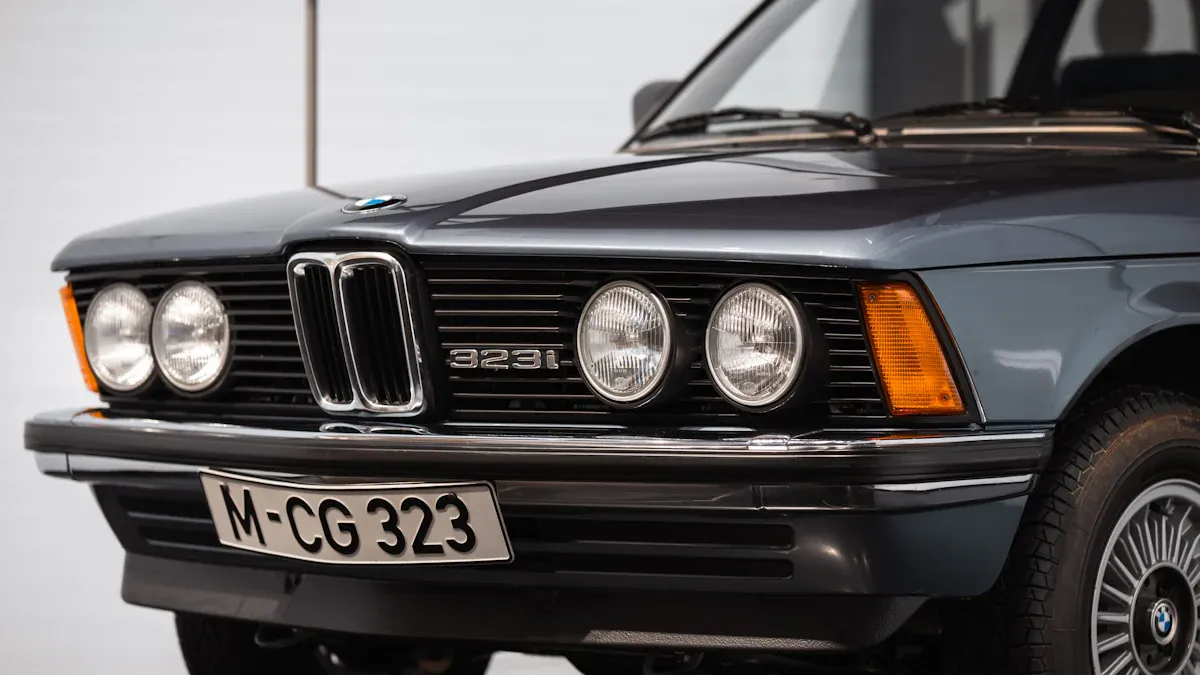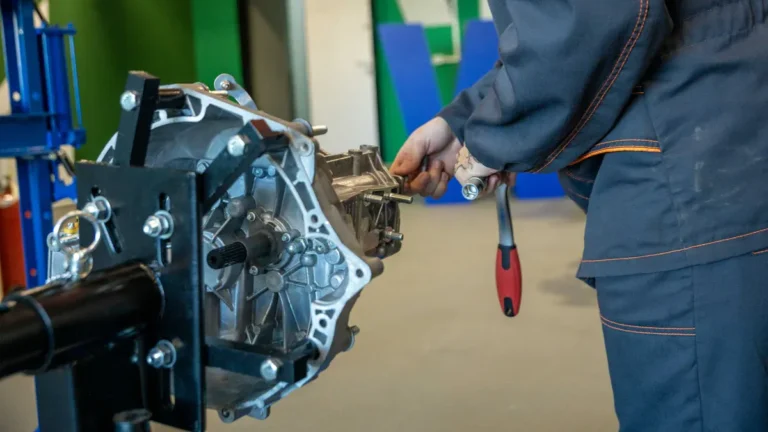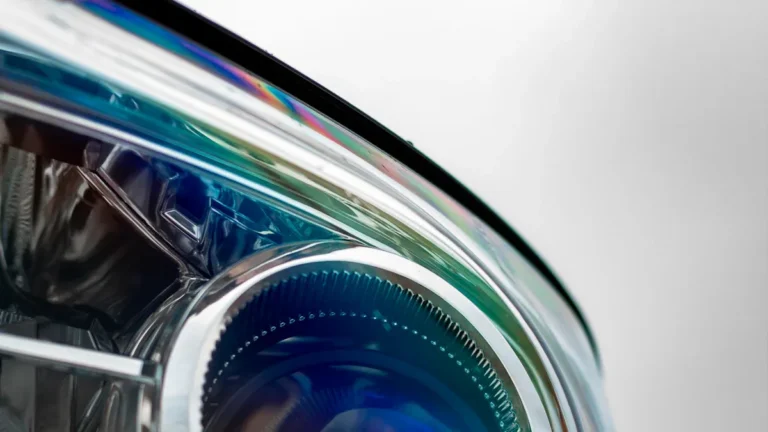
BMW, founded in 1916, stands as a significant player in the automotive industry. Its origins trace back to the production of aircraft engines during World War I. You should recognize that BMW’s transition to automobile manufacturing was crucial. The Treaty of Versailles forced the company to adapt, leading to innovations in luxury vehicles. Understanding how old BMW is today, as it celebrates over a century of history, helps you appreciate its evolution and ongoing influence in the automotive world.
Key Takeaways
BMW was founded in 1916, originally making aircraft engines before shifting to automobiles after World War I.
The company officially entered the car market in 1928 with the acquisition of Fahrzeugfabrik Eisenach, producing its first car, the BMW 3/15.
BMW has a rich history of innovation, introducing iconic models like the BMW 328 and the electric BMW i3, which reflect its commitment to quality and modern trends.
With over 107 years in the industry, BMW remains a leader in automotive technology, known for reliability and performance.
The brand’s marketing has evolved to focus on emotional storytelling, enhancing consumer loyalty and connection.
Founding Year

BMW’s journey began on March 7, 1916, when you saw the establishment of Bayerische Flugzeugwerke AG. This company emerged as a successor to the Gustav-Otto-Flugmaschinenfabrik. Initially, it focused on manufacturing aircraft engines during World War I. The company’s roots trace back to Rapp Motorenwerke, which specialized in military aircraft engines.
In 1917, Bayerische Flugzeugwerke AG underwent a significant transformation. The company changed its name to Bayerische Motoren Werke GmbH. This name change marked a shift in focus from solely aircraft engines to a broader range of engine production. The transition reflected the changing demands of the post-war economy. As the war ended, the company aimed to diversify its production efforts.
This evolution laid the groundwork for BMW’s future as a leading automotive manufacturer. The merger of Rapp Motorenwerke and Gustav Otto’s business created a strong foundation. By adapting to the market’s needs, BMW positioned itself for success in the automotive industry.
In its early years, BMW primarily engaged in aircraft engine manufacturing. However, the company quickly expanded its horizons. In 1923, it released the innovative BMW R32 motorcycle. This model showcased BMW’s engineering prowess and set the stage for its entry into the automotive market. In 1928, BMW acquired Fahrzeugfabrik Eisenach, which allowed it to produce the Dixi, based on the Austin 7. By 1932, BMW began producing cars with its own designs, marking a significant shift from motorcycles to automobiles.
Understanding the founding year of BMW helps you appreciate how the company evolved over time. From its beginnings as an aircraft engine manufacturer to its current status as a global automotive leader, BMW’s history is rich and fascinating.
How Old Is BMW Today?
As of now, BMW has celebrated over 107 years in the automotive industry. This longevity places it among the oldest and most respected manufacturers in the world. You can appreciate how BMW’s age contributes to its reputation for quality and innovation. The brand has consistently pushed the boundaries of automotive technology, setting high standards for performance and luxury.
When you compare BMW’s age to other major automotive brands, you see a fascinating landscape. Here’s a quick comparison:
Ford: Founded in 1903, Ford is older than BMW by 13 years.
Mercedes-Benz: Established in 1926, Mercedes-Benz is younger than BMW by 10 years.
Toyota: Founded in 1937, Toyota is 21 years younger than BMW.
Volkswagen: Established in 1937, Volkswagen is also 21 years younger than BMW.
Despite being one of the older brands, BMW attracts a younger demographic. The average age of BMW owners is in the mid-forties, making them the youngest in the luxury car market. In contrast, the average age of Rolls-Royce buyers has recently dropped to 35 years old. This trend shows that BMW continues to appeal to a younger audience while maintaining its reputation for luxury and performance.
BMW’s longevity has significantly contributed to its standing in the automotive industry. The brand is recognized for its innovative automotive technology, which sets a high standard. Here’s how BMW’s age enhances its reputation:
Factors | Impact |
|---|---|
Innovative Technology | BMW consistently introduces advanced features that enhance the driving experience. |
Reliability | Owners report that BMW vehicles are enjoyable to drive and impressively reliable over time. |
Engineering Excellence | BMW’s world-class engineering translates into long-term reliability. |
Many BMW owners express pride in their vehicles. They note that with consistent maintenance, their cars not only provide an enjoyable driving experience but also exceed reliability expectations. This commitment to quality reinforces BMW’s standing in the automotive industry.
Understanding how old BMW is today helps you appreciate its legacy and ongoing influence. The brand’s rich history and dedication to innovation ensure that it remains a leader in the automotive world.
Key Historical Milestones
BMW’s history is marked by several key milestones that shaped its identity. One of the most significant events occurred in 1928 when BMW entered the automobile manufacturing industry. You can see how this move transformed the company. Here are some important milestones in BMW’s journey:
1928: BMW acquired Fahrzeugfabrik Eisenach, which produced the Austin Seven under the Dixi brand. This acquisition marked BMW’s official entry into automobile manufacturing.
1929: The first car sold as a BMW was the rebadged Dixi known as the BMW 3/15. This model laid the foundation for BMW’s future in the automotive market.
1930s: Throughout this decade, BMW expanded its offerings to include sports cars and larger luxury vehicles, establishing a reputation for quality and performance.
1952: After World War II, BMW resumed automobile production with the launch of the BMW 501 luxury sedan. This marked a significant recovery for the company.
1962: The introduction of the BMW New Class compact sedans helped solidify BMW’s reputation for sport-oriented cars.
The impact of World War I on BMW’s production was profound. Initially, BMW focused on aircraft engines, gaining recognition for the BMW IIIa engine. However, the Treaty of Versailles forced the company to pivot. You might find it interesting that after the war, BMW shifted its focus to motorcycle production, leading to the introduction of the R32 in 1923. This transition allowed BMW to adapt to the changing market and set the stage for its future success.
Understanding these key historical milestones helps you appreciate how BMW evolved over time. The company’s ability to adapt and innovate has played a crucial role in its longevity and success in the automotive industry.
Iconic Models and Innovations

BMW has produced several iconic models that shaped its identity and the automotive landscape. Here are some early models that stand out:
BMW 3/15 (1929): This model marked BMW’s entry into the automotive industry. It catered to the middle class and helped the brand establish itself after World War I.
BMW 328 (1936): Known for its performance, the 328 won the Mille Miglia, solidifying BMW’s reputation in motorsports.
BMW 507 (1956): Although it was a commercial failure, the 507 symbolized BMW’s ambition in the luxury sports car market.
BMW 700 (1959): This compact car played a crucial role in saving BMW from financial collapse with its innovative design.
BMW 2002 (1968): This model defined BMW’s identity with sporty performance and practicality, leading to global expansion.
In recent years, BMW has continued to innovate and expand its brand portfolio. The company has introduced numerous advancements that transformed the driving experience. For example, the iDrive system, launched in the early 2000s, revolutionized how you interact with your vehicle by integrating various functionalities into a single interface.
Here are some key innovations from BMW:
Year | Innovation | Description |
|---|---|---|
2003 | Head-up Display | First-ever head-up display in a German-built production car, enhancing driver control and safety. |
1994 | Steering Wheel Controls | Introduction of buttons on the steering wheel for easy access to entertainment and driving modes. |
Early 2000s | iDrive System | Combined infotainment, navigation, and settings into a single interface. |
Recent Years | Digital Cockpit | Transition from analogue gauges to digital displays, enhancing user experience. |
BMW’s commitment to innovation ensures that it remains a leader in the automotive industry. The brand’s ability to adapt and introduce new technologies keeps it relevant and appealing to drivers worldwide.
The Evolution of BMW
BMW has undergone significant changes in ownership and management throughout its history. These shifts have influenced the company’s strategic direction and growth. Here are some key events:
Year | Event Description |
|---|---|
1959 | BMW negotiated its independence for the second time, rejecting an acquisition offer from Daimler-Benz and restructuring with government assistance. |
1994 | BMW acquired the Rover Group, which included brands like Land Rover and Mini, but sold Rover in 2000 while retaining Mini. |
1998 | BMW negotiated ownership of the Rolls-Royce brand and naming rights, achieving full ownership in 2002 and establishing a new plant in Goodwood, England. |
Recent leadership changes also play a crucial role in BMW’s evolution. For example, Leigh Moynihan will become Vice President of Marketing in August 2025. This appointment aims to enhance BMW’s brand positioning in the U.S. market. Moynihan will oversee marketing communications and advertising, indicating a shift towards a more innovative marketing approach.
Additionally, Joachim Post will take over from Frank Weber as head of research and development. This change is vital for the development of the Neue Klasse models, which are essential for BMW’s future direction, especially in electrification.
As of now, BMW stands as one of the most valuable automotive brands globally. According to Interbrand, it ranks 3rd with a brand value of $41.5 billion. Forbes places it 2nd with a brand value of $28.8 billion. BMW competes closely with Toyota and Mercedes-Benz in brand value rankings.
Looking ahead, BMW is committed to electrification and sustainability. The company plans to launch eight all-electric models by the end of 2022. By 2030, all-electric vehicles are expected to comprise half of total deliveries. This strategy reflects BMW’s dedication to innovation and environmental responsibility, ensuring its continued relevance in the automotive industry.
In summary, BMW’s rich history spans over 107 years, showcasing its evolution from aircraft engines to luxury automobiles. Here are some key points to consider:
BMW’s marketing strategies have shifted from print ads to emotional storytelling, reinforcing consumer loyalty.
The brand has consistently set benchmarks in automotive innovation, influencing modern features and design.
Year | Event | Impact |
|---|---|---|
1923 | First motorcycle, BMW R32 | Set a world speed record that remained unbroken for nearly 14 years. |
2013 | Released electric BMW i3 | Emphasized adaptation to modern trends like electric mobility. |
Reflect on how BMW’s legacy shapes its current brand image and consumer perception. As you look to the future, consider how BMW will continue to innovate and lead in the automotive industry. 🚗✨
FAQ
What does BMW stand for?
BMW stands for Bayerische Motoren Werke, which translates to Bavarian Motor Works in English. This name reflects the company’s origins in Bavaria, Germany.
When did BMW start making cars?
BMW began manufacturing cars in 1928 after acquiring Fahrzeugfabrik Eisenach. The first car produced was the BMW 3/15, a rebadged version of the Dixi.
What is BMW’s most famous model?
The BMW 328, introduced in 1936, is one of the most famous models. It gained fame for its performance and success in motorsports, particularly winning the Mille Miglia.
How has BMW evolved over the years?
BMW has evolved from producing aircraft engines to luxury automobiles. The company has embraced innovation, focusing on electric vehicles and advanced technology to meet modern demands.
Is BMW involved in motorsports?
Yes, BMW has a rich history in motorsports. The brand has participated in various racing events, including Formula E and touring car championships, showcasing its engineering excellence and performance capabilities.



